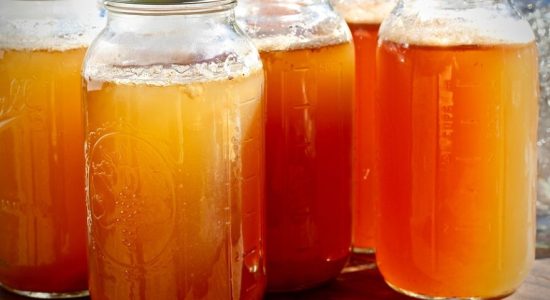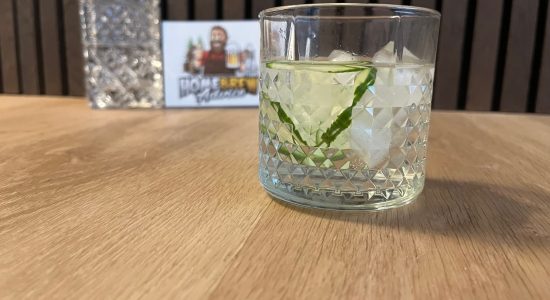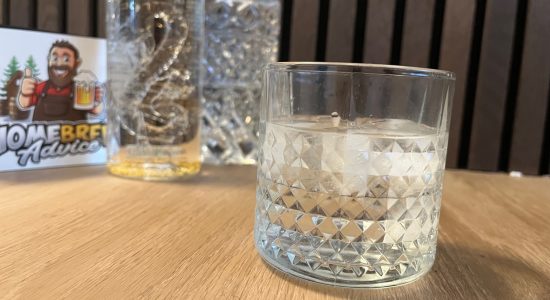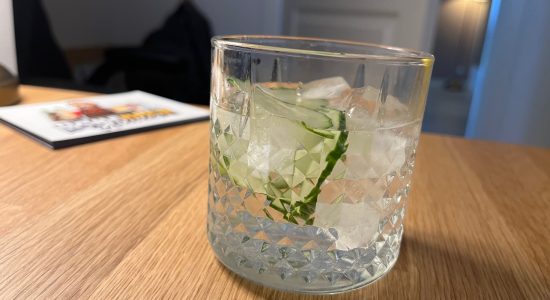How To Make Vodka – The Ultimate Guide

The clean and bold kick of vodka has turned the drink from a Russian delight into a worldwide favorite. However, its luxurious profile isn’t that complicated to make – you can even create it at home!
You can make vodka using a starch or sugar source, like a vegetable, grain, or fruit. To turn the starch or sugar source into vodka, you’ll need to mash it, ferment the wash, distill it, and then filter the distillate. Afterward, dilute the liquid with water to turn it into vodka!
Making basic homemade vodka is easy, especially if you follow the straightforward process I’ll lay out in this article. Below, I’ll also provide some background information on each step so you’ll understand the process better. Let’s get started!
How To Make Vodka
I’ve already discussed making vodka in this article: How to Make Vodka (at Home) & 5 Cocktail Recipes. Although it provides an excellent overview of the process, much still needs to be said.
Thus, I’ve created this more comprehensive and detailed guide on making vodka. Here, I’ll provide a more in-depth explanation of the ingredients and equipment needed, and I’ll also talk about whether you can make flavored vodka.
For now, I’m covering the usual vodka that we know and love – odorless and tasteless but absolutely full of kick!
Phases of Vodka Making
The process of making vodka is easier to understand when you think of it in phases, which are:
- Preparation
- Mashing
- Fermentation
- Distillation
- Collection and dilution
Preparation
This phase precedes the actual steps of vodka making or distillation. When preparing for the process, here’s what you should accomplish:
- Decide on your sugar or starch source. Although the recipe in this post uses potatoes, it’s not the only food product you can use. The following sections will explain some excellent potato alternatives.
- Prepare ingredients and equipment. You should make sure your equipment is clean and sanitized. The food products (i.e., sugar and starch sources) should also be cleaned.
If you want tips on cleaning and sanitizing your equipment, you can check out my writeup: How to Fully Deep Clean and Sanitize Brewing Equipment.
Mashing
If you decide to work with starchy products, like grains and potatoes, you must first break down the starch into sugars. You’ll have to make a mash containing the products and active enzymes to do so.
You can use the following as a source of active enzymes:
- Food-grade amylase powder
- Malted barley or wheat
You can also skip the mashing phase if you’re using the following:
- Fruit juice
- Malted whole grains or sugars
Fermentation
Fermentation is the heart or essence of every alcohol-making process. That’s because it’s the reaction where yeast converts sugars into alcohol, specifically ethanol.
To ferment your mash, malted grains, or fruit juice, you’ll separate the liquid from it using a strainer. Then, pour the liquid into a fermentation bucket or vessel.
When you first pour liquids into the vessel, let them splash. In doing so, you incorporate oxygen, which yeast needs to start fermentation.
However, once fermentation begins, you can’t incorporate more oxygen, and you’ll need to seal the vessel with an airlock.
To learn more about the importance of an airlock during fermentation, watch this video:
If you’re looking for some airlock recommendations, read my article here: The Best Airlocks For Homebrewing » (Guided Airlocks Tour).
After closing and sealing, it’s a waiting game until the reaction ends. You’ll know the process is complete when the bubbling of the airlock stops.
However, there are cases when fermentation gets stuck, and you can read this article to learn why that happens and what you can do about it: 6 Ways To Tell If Your Fermentation Is Stuck.
Distillation
Once fermentation is finished, you must collect the liquid by straining the fermented mash. Then, you’ll want to distill it to purify or separate the alcohol from the other substances in the mixture, like water.
Distillation can do that because water has a different or higher boiling point than alcohol. The alcohol evaporates as the wash is heated. Then, it travels through the apparatus and condenses as a liquid, which you will collect.
However, you can’t consume the first and last collections of distillation. These may still contain harmful substances, and you must throw them away.
The setup or apparatus for distillation is called a still. Pot stills are usually the preferred choice, but you can use a column still if you don’t have one.
When heating the still, it’s advisable to aim for a temperature of 173° F (78.3° C). What’s important, though, is to keep the temp below the boiling point of water.
If you exceed the boiling point, you risk mixing water (and other substances) with your purified alcohol, which is the exact opposite of what you’re trying to achieve.
Collection and Dilution
Once you’ve collected your alcohol, you can filter it and then dilute it with filtered water.
The amount of water you’ll need depends on the proof or percentage of alcohol you want in your drink. The less water you add, the more concentrated and potent your vodka is.
Ingredients
- 20 lbs (9.07 kg) potatoes (clean and unpeeled)
- 2 lbs (0.907 kg) malted barley or wheat
- Sugar solution (optional)
- Yeast
- Filtered water
Alternative Starch or Sugar Sources
Potatoes were first used to make vodka. You can read more about that story and other fun facts in this article: What Was Vodka Originally Made From? – [9 Fun Facts About Vodka].
However, these root crops are just one of the products you can use. In making vodka, you can choose from nearly any:
- Vegetable
- Fruit
- Grain
- Molasses
- Sugar
- Fermentable food product
You can even use fruit juice. If you opt for that, you can skip the mashing steps in making vodka and proceed to fermentation.
An essential element in vodka making is that the base product should have starch or sugar. This is because starch can be broken down into sugar, which the yeast will then convert into alcohol.
Equipment
- Pots
- Burner (or any heat source)
- Thermometer
- Hydrometer
- Fermentation bucket or vessel
- Airlock
- Strainer
- Cheesecloth (optional)
- Distillation apparatus/still
- Carbon filter
- Containers
Directions
- Check if distilling vodka is legal in your country. If it is, proceed.
- Prepare your ingredients and equipment. Ensure that the equipment is complete, clean, and sanitized.
- Clean your potatoes by scrubbing off the dirt. You can cut them into cubes but do not peel them.
- Place potatoes in a pot or kettle filled with water. Let it boil for 20 minutes to 1 hour or until it is gelatinized. Aim for a temperature of 150° F (66° C), as potatoes usually gelatinize at this temperature.
- Discard the water, and then mash the potatoes. You can do it by hand or with an immersion blender or food processor.
- Return the mashed potatoes to the pot.
- Add 5 to 6 gallons (19 to 23 L) of water, and then stir. Wait until it reaches 150°F (66°C).
- Add the malted barley or wheat and then mix.
- Cover and let it cook for two hours. Stir the mixture every now and then.
- Cool the mash overnight, allowing the enzymes to break down the starch. If you can’t wait, let it cool until it reaches 75 degrees Fahrenheit (23.8 degrees Celsius).
- Prepare your fermentation equipment and setup.
- Strain your cooled mash into a fermentation vessel using a metal strainer. Only liquid must go into the container. Let the liquid splash as you transfer it for aeration. Add a sugar solution if you have one.
- Add the yeast. If you are using bread yeast, prepare a yeast starter first. If you’re using a distiller’s yeast, a good amount is 1 tablespoon for every 5 gallons of mash.
- Close the vessel with the lid and airlock and keep it in a room at 80° to 85° F (27° to 29° C). Wait until fermentation is finished.
- To determine if fermentation is done, check the airlock and see if it has stopped bubbling. You can also do an iodine test or take hydrometer readings.
- Once the fermentation is complete, collect the fermented wash or liquid. You may want to pass it through a cheesecloth first to ensure that there are no solid particles.
- Prepare your distillation equipment and setup.
- Put the wash or liquid in the boiling chamber of your distillation setup. You can use an auto-siphon to do so.
- Heat up the distillation setup. Ensure that it remains BELOW water’s boiling point of 212° F (100° C).
- Wait for the liquid to drip from the end. Discard the first and last 60 milliliters (2 fl oz) you collect.
- If needed, re-distillate to achieve your target alcohol purity.
- Pass the collected distillate or alcohol through a carbon filter.
- Dilute it with filtered water until you reach the desired alcohol percentage or proof. You can use an alcometer to measure.
- Enjoy your vodka as it is, or use it in cocktail recipes.
Is Making Vodka Legal?
In some countries, the production of distilled spirits at home, such as moonshine and vodka, is strictly prohibited. Checking your national laws first before assembling your home distillation setup is, therefore, essential.
For instance, in the United States, possessing an unregistered still or producing distilled spirits without a permit could lead to federal charges. It may be punishable with a fine worth thousands of dollars, imprisonment for many years, or both.
You should also ensure that the process is legal in your state. If you need a permit, secure one to avoid getting into trouble.
If you don’t want the hassle of getting permits, you can still make alcohol, just not distilled spirits. You might want to try making mead instead: How To Make Mead at Home – (Easy Step-by-Step), which is just as easy (maybe even easier) as making vodka.
Can You Make Flavored Vodka?
As a drink, vodka typically has no personality. It’s odorless and flavorless, unlike gin and other alcoholic beverages.
However, vodka’s clean profile makes it very suitable for infusing flavors, and it was only a matter of time before flavored vodkas were created.
It’s relatively easy to infuse flavors into vodka. Here’s how you can do it:
- Prepare your container. Using a mason jar for infusing vodka is advisable. Glass doesn’t impart flavor, and jars have openings wide enough for various flavoring agents (from fruits to spices).
- Select your flavors. The world is your oyster when choosing vodka flavors. You can keep it simple and opt for vanilla, cinnamon, apples, lemons, etc. Alternatively, you can be daring and experiment with flavors like chili.
- Prepare your flavoring agents. There are many ways to prepare flavoring agents, so it’s difficult to be specific. You must simply ensure that the flavors can seep out once you mix them with the vodka. For instance, if you choose lemons, you should be able to remove them.
- Infuse the flavors. Once prepped, place the flavor items in the mason jar, and pour the vodka.
- Let it sit. It can take anywhere from a few days to a week for the flavors to infuse into the vodka. You can also shake the jar once daily for better dispersion. If the drink still tastes bland, add more flavoring as you go.
- Strain the vodka. Once you like the flavors, strain it until it’s clear (if that’s possible).
- Store. Cap and store your vodka. If you infuse it with perishable items, you’ll need to keep the drink in the fridge.
BBC Good Food has a variety of flavored vodka recipes here.
What Are Some Recommended Vodka Cocktails?
Vodka is used to make many cocktails, especially sweet or fruity-flavored ones. This has earned it the stereotype of being a ladies’ drink, although vodka is something everyone, regardless of gender, can enjoy.
If you’re in the mood to make a cocktail or order one, here are a few vodka drinks you might enjoy:
- Bloody Mary
- Sangria
- Tonic
- White Russian
- Moscow Mule
- Cosmopolitan
- Vodka Cranberry
- Classic Vodka Martini
- Long Island Iced Tea
Final Thoughts
Vodka is one of the easiest drinks to make at home, especially if you have a still and ingredients on hand. The whole process, from mashing to bottling, is pretty straightforward.
Moreover, there’s a lot of room for creativity once you’ve learned how to make it. You can infuse it with flavors or turn it into a fun cocktail!







